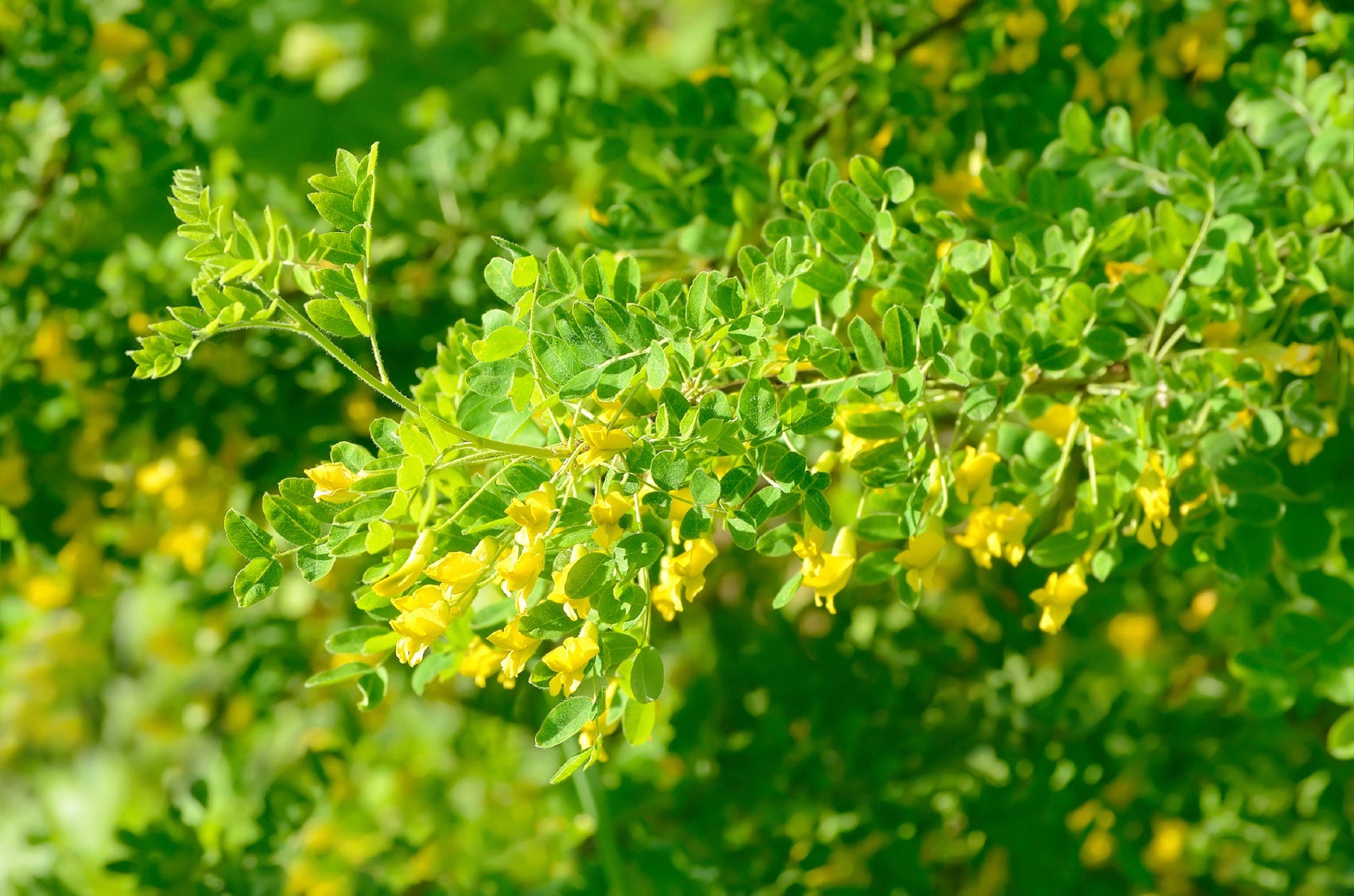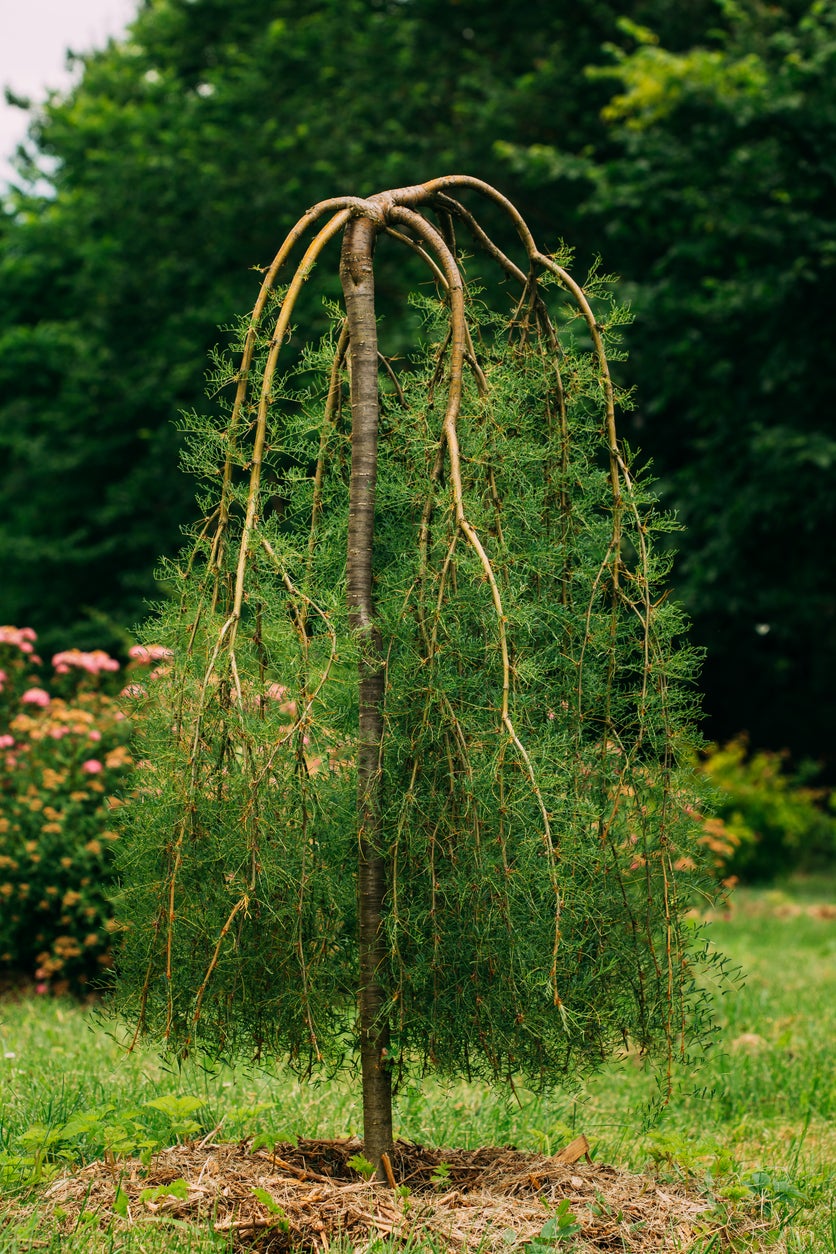How To Grow A Pea Tree: Information About Caragana Pea Trees

If you're looking for an interesting tree that can tolerate a wide range of growing conditions in the landscape, consider growing yourself a pea tree. What is a pea tree, you ask? Keep reading for more information about pea trees.
About Pea Trees
A member of the pea family (Fabaceae), the Siberian pea tree, Caragana arborescens, is a deciduous shrub or small tree native to Siberia and Manchuria. Introduced into the United States, the Siberian pea tree, otherwise known as Caragana pea tree, attains heights of between 10 to 15 feet (3-4.5 m.) tall, some up to 20 feet (6 m.) tall. It is composed of alternate 3- to 5-inch (7.5-12.5 cm.) long leaves made up of eight to 12 oval leaflets with yellow snapdragon-shaped blooms appearing in early spring and forming pods in late June or early July. Seeds are spread as the ripening pods burst with a resounding pop. The Siberian pea tree has been used medicinally while some ethnic groups eat the young pods, use the bark for fiber, and render an azure-colored dye from its leaves. During WWII, Siberian peasants supposedly overwintered their poultry flocks by feeding them the seeds of Caragana pea trees, which wildlife enjoy as well. The erect to almost weeping habit of the pea tree lends itself well to planting Caragana as windbreaks, in borders, screen plantings, and as flowering hedges.
How to Grow a Pea Tree
Interested in how to grow a pea tree? Planting Caragana trees may occur in almost any region of the United States, as it is fairly tolerant of most conditions. Siberian pea trees can be planted anywhere in anything from full sun to partial shade and in moist to dry soil. Planting Caragana pea trees may occur in clay, loam, or sandy soil media with either a high acidity or high alkalinity in USDA plant hardiness zones 2-8. You should plan on planting your pea tree after the chance of any frost in the area. Dig a hole that is twice as wide as the root ball and 2 inches (5 cm.) as deep. Add a couple of handfuls of compost and four handfuls of sand (if you have dense soil) to the dirt. If you are planning on creating a hedge, space each plant 5 to 10 feet (1.5-3 m.) apart. Place 2 inches (5 cm.) of this amended soil back into the hole and put the new Siberian pea plant atop and fill with the rest of the soil. Water thoroughly and tamp down the soil around the plant. Continue to water every other day for the first two weeks to establish strong roots then thereafter reduce watering to twice a week for the next two weeks.
Pea Tree Care
Since the Siberian pea plant is so adaptable, there is minimal pea tree care to consider once established. Feed the plant a slow-release fertilizer tablet or granules once the plant has started to grow and water in. You will only need to fertilize once a year in the spring. Water every week unless the weather is overly hot and dry, and prune as needed - ideally in late winter to early spring, especially if creating a hedge of Caragana pea trees. Caragana pea trees will even flourish on the seaside as well as in more arid climates and are resistant to most pests and diseases. This hardy flowering specimen can live from 40 to 150 years growing an additional 3 feet (1 m.) per season, so if planting Caragana in your landscape, you should enjoy the tree for many years to come.
Gardening tips, videos, info and more delivered right to your inbox!
Sign up for the Gardening Know How newsletter today and receive a free copy of our e-book "How to Grow Delicious Tomatoes".

Amy Grant has been gardening for 30 years and writing for 15. A professional chef and caterer, Amy's area of expertise is culinary gardening.
-
 Try The Trend – Turn Any Bed Into A Keyhole Garden With This Clever In-Ground Composter
Try The Trend – Turn Any Bed Into A Keyhole Garden With This Clever In-Ground ComposterKeyhole gardening is an efficient and sustainable practice that saves space. Get started on this DIY project quickly and easily with an in-ground composter.
By Bonnie L. Grant
-
 4 Superfast Composting Methods: Turn Waste Into Garden Gold In 30 Days Or Less
4 Superfast Composting Methods: Turn Waste Into Garden Gold In 30 Days Or LessTry the fastest composting methods to turbocharge your pile and transform kitchen scraps and garden waste into finished compost in just a few weeks.
By Mary Ellen Ellis
